There are numerous barcodes around the world, but among them, one of the most important and widely used are the codes of the GTIN system. United Barcode Systems has been working on the printing and encoding of this code practically since its inception over 30 years ago, which is why today we explain everything about them.
Introduction to GTIN codes: History and Importance.
History of the GTIN code:
GTIN codes have their roots in the "UPC" (Universal Product Code) system, which was first developed by Norman Joseph Woodland and Bernard Silver in the 1940s.
Subsequently, in 2005, the UPC was unified with other product code systems into the GTIN (Global Trade Item Number) system, managed by the GS1 organization, a global entity that sets standards for the unique identification of products and data management in the supply chain.
Since then, GTIN encompasses a variety of codes such as GTIN-12 (equivalent to UPC), GTIN-13 (EAN-13), and GTIN-14 (DUN-14), each designed to uniquely identify products worldwide in different types of packaging.
Importance of GTIN codes:
GTIN codes play a fundamental role in today's supply chain and retail trade. They allow precise and unique identification of each product, facilitating its tracking from production to the final point of sale. This not only improves inventory management efficiency but also provides consumers with crucial information about the products they are purchasing.
What is a GTIN code? Definition and characteristics.
The GTIN code, abbreviation for Global Trade Item Number, is a unique identifier used to label products and facilitate their tracking along the global supply chain.
Each product has a unique GTIN code that distinguishes it from other similar products in the market. This code is essential to avoid confusion and ensure traceability throughout the production line.
GTIN codes can be presented in various formats, each with a specific structure serving different purposes, such as identifying individual products, packaging boxes, and pallets. Let's delve into them in depth.
GTIN Code Formats - What types exist and how are they applied according to packaging?
In this table, you will find a summary of how each GTIN code is organized and functions according to the packaging in which it is found:
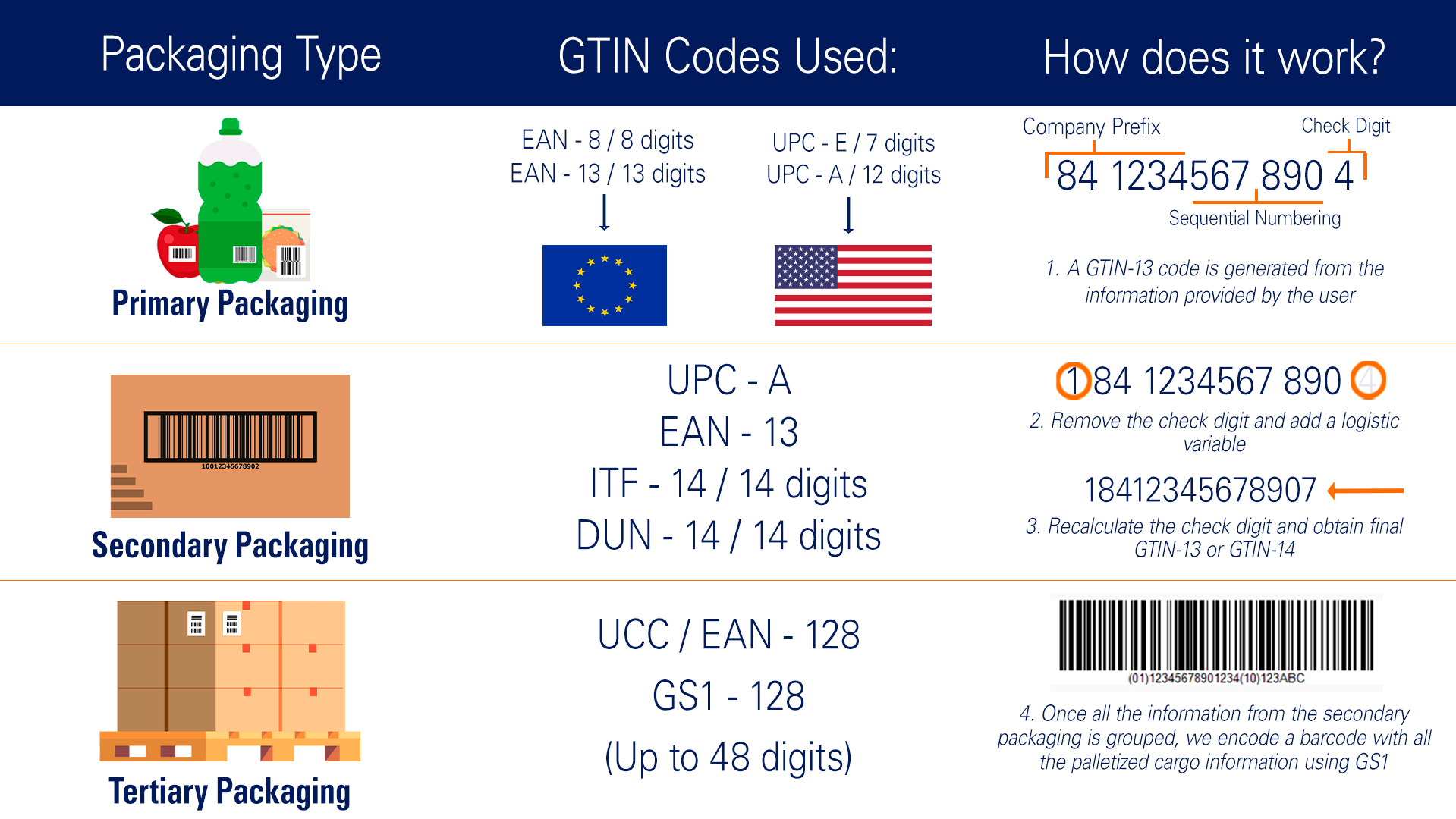
-
GTIN-8 (EAN-8 o UPC-E):
GTIN-8 is a shortened version of GTIN-13 and consists of 8 numeric digits. It is used in products with limited space for barcodes, such as medications and small consumer items. It is often used to identify products sold in emerging markets and vending machines.
-
GTIN-12 (UPC-A):
GTIN-12 is equivalent to the Universal Product Code (UPC) and consists of 12 numeric digits. This format is mainly used in North America and is found on consumer products, especially in supermarkets and retail stores.
-
GTIN-13 (EAN-13):
GTIN-13 is the European Article Number (EAN) Standard and consists of 13 numeric digits. It is widely used worldwide, especially in Europe, Asia, and Oceania. The first digit of GTIN-13 identifies the country of origin of the product.
-
GTIN-14 (ITF-14 o DUN-14):
GTIN-14 is a code consisting of 14 numeric digits. It is used to identify packaging boxes, pallets, and other levels of product packaging. It is useful for logistics management and tracking shipments of large volumes of products.
-
GS1-128:
GS1-128 is a logistics symbology that groups the different types of information contained in a pallet load into a single concatenated number. The structure is defined by the size of this information, as the AI (numeric prefixes of two or more digits in parentheses) separate the information represented in each section.
Would you like to stay up-to-date on the latest in the Packaging sector? Discover our newsletter!
GTIN Code Structure:
GTIN codes have a specific structure that allows for unique and standardized identification of products in the supply chain. Below, we explain in detail the basic structure of a GTIN code and what its digits represent:
-
1. Company Prefix (GS1 Company Prefix):
The first digits of the GTIN code represent the company prefix, assigned by GS1. This prefix identifies both the manufacturer or company owning the product and the country of origin of the manufacturer. The length of the prefix may vary depending on the number of products a company needs to identify.
-
2. Item Reference:
The digits following the company prefix represent the specific article number of the product. This number is internally assigned within the company and is unique for each product it produces.
-
3. Check Digit:
The last digit of the GTIN code is the check digit, calculated using a specific algorithm. The check digit is used to verify the accuracy of the GTIN code and detect potential data entry errors.
Example of a GTIN-13 code structure:
Let's assume a Spanish company (country prefix 84) has the company prefix "8423456" and the article number "78901" for a specific product. The GTIN-13 code for this product would look like this:
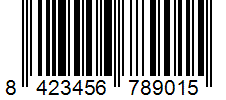
The number "5" represents the check digit, which is always a randomly generated number by the GS1 system when a new barcode is produced.
How to print a GTIN code on packaging?
To print or encode a GTIN code on packaging, we must first ensure what our format is and in what type of packaging we want to include it:
Primary Packaging: Consumer products and small boxes
GTIN-8, GTIN-12, and GTIN-13 codes are usually used on these packages.
To print this information in such a small space, we will need a Thermal Inkjet printer like our TJX.
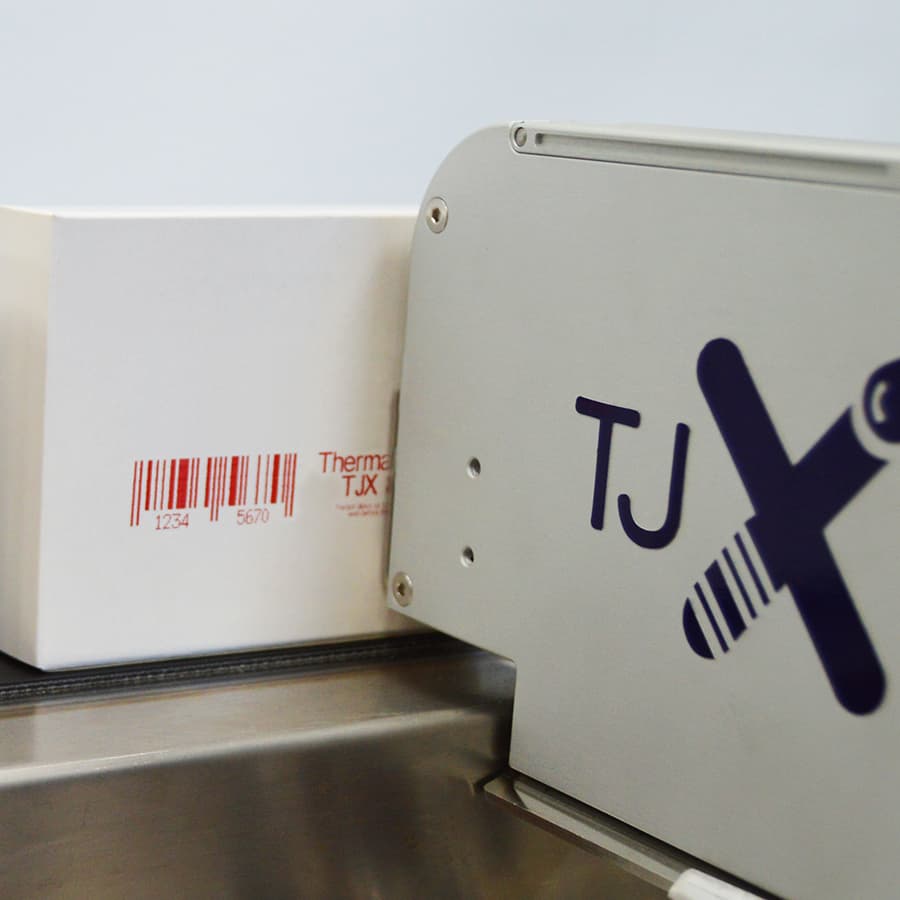
TJX Series
- Speed up to 120 m/min.
- Printing on any type of surface.
- Clean technology, no leaking or heavy odors. Each cartridge is a new print head
Secondary Packaging: Boxes, bags, and others
GTIN-13 or GTIN-14 codes are usually used with these packages.
To encode a GTIN code on boxes or bags, it is necessary to have a High-Resolution Inkjet printer such as our APLINK MRX72e.
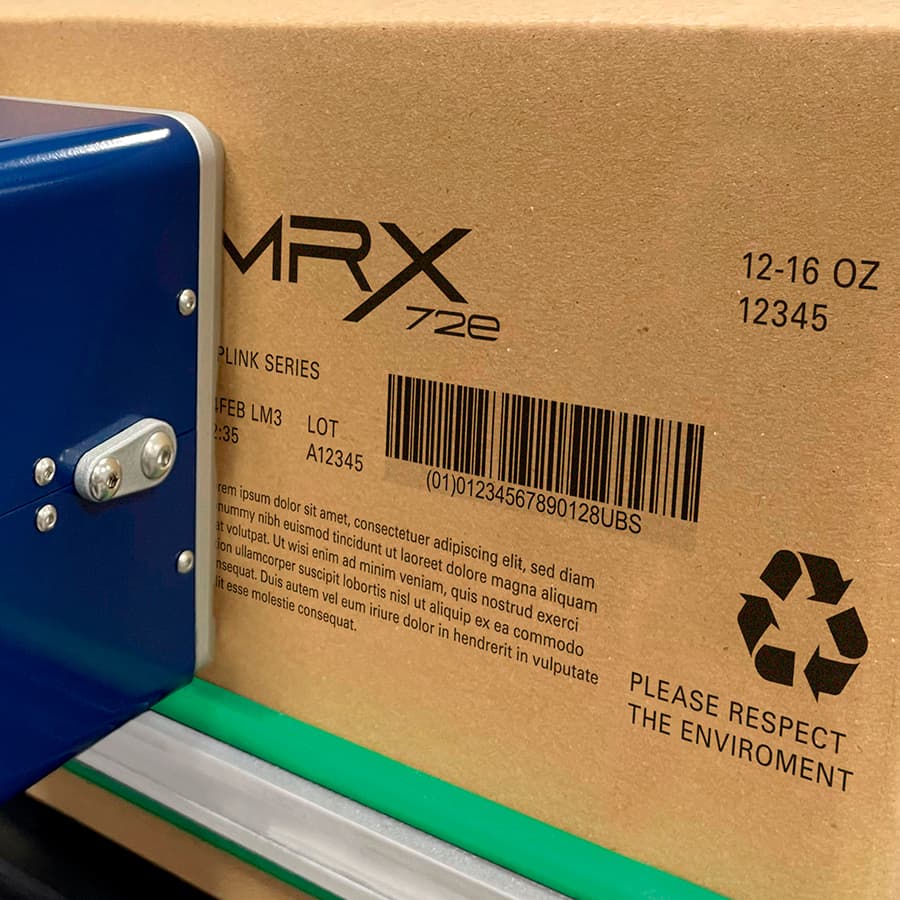
APLINK MRX72e
- Speeds up to 110 m/min and 4 prints/second.
- High resolution: Binary head with 180 dpi native resolution per 720 dpi horizontal resolution.
- In addition to printing GTIN codes, it also prints fixed or variable texts, formulas, logos, images, and more.
Tertiary Packaging: Pallets
EAN-128 or GS1-128 codes are usually used with these packages.
For automatically labeling codes on pallets, the best option is to get a system for printing and applying self-adhesive labels on pallets like our APL 80 Series equipment.
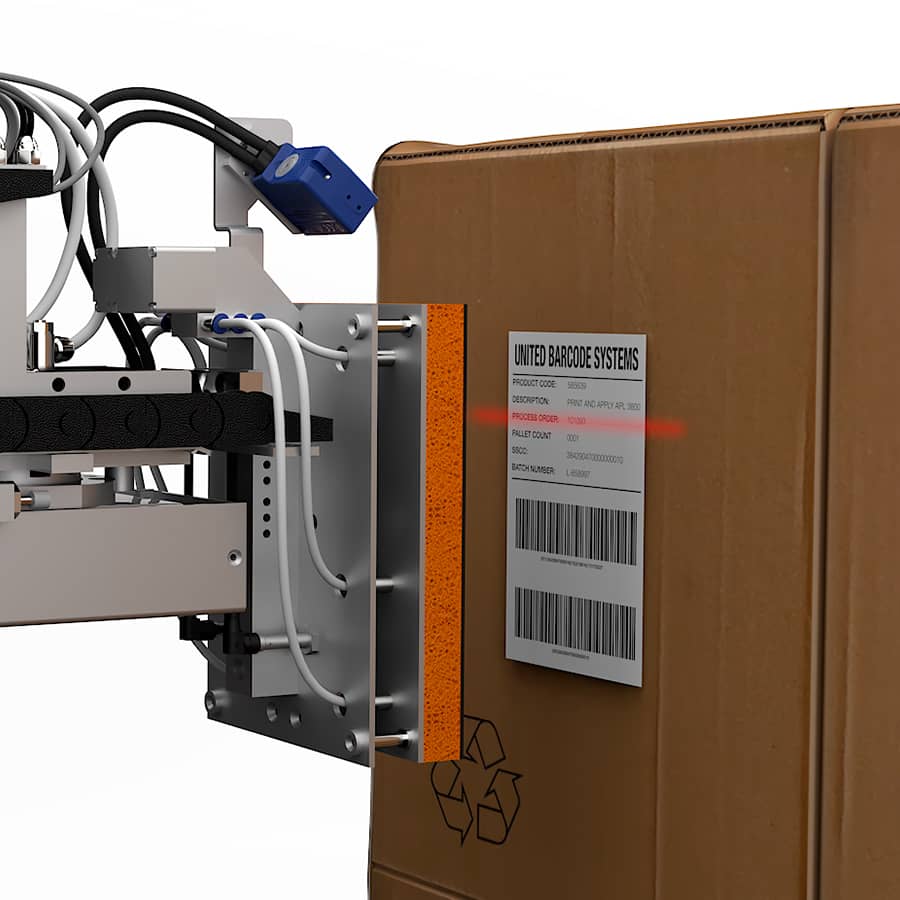
APL 80 Series
- Up to 180 pallets/hour depending on line integration.
- Printing and applying labels up to 3 sides of the pallet complying with GS1 standards.
- Height labeling: APL 80ELV version has a lifting column for labeling stacked pallets at different heights.
How do I get my GTIN code? Steps to follow.
The process to obtain a GTIN code begins by visiting the GS1 website and requesting a barcode. To do this, we must register as partners in GS1 by providing the following information in the entry form:
-
Company data where we work.
-
CNAE, turnover figure from the previous year, and number of employees.
-
Reason for registration.
-
Applicant's data.
Once we have completed these steps, we will be asked for an entry fee, which can be reduced if the company wishing to register has billed less than €100,000 in the previous year.
Once associated, you will be assigned a GS1 prefix of between 7 and 10 digits that uniquely represents your brand. This way, you can create a product catalog and identify them with your GTIN code.

